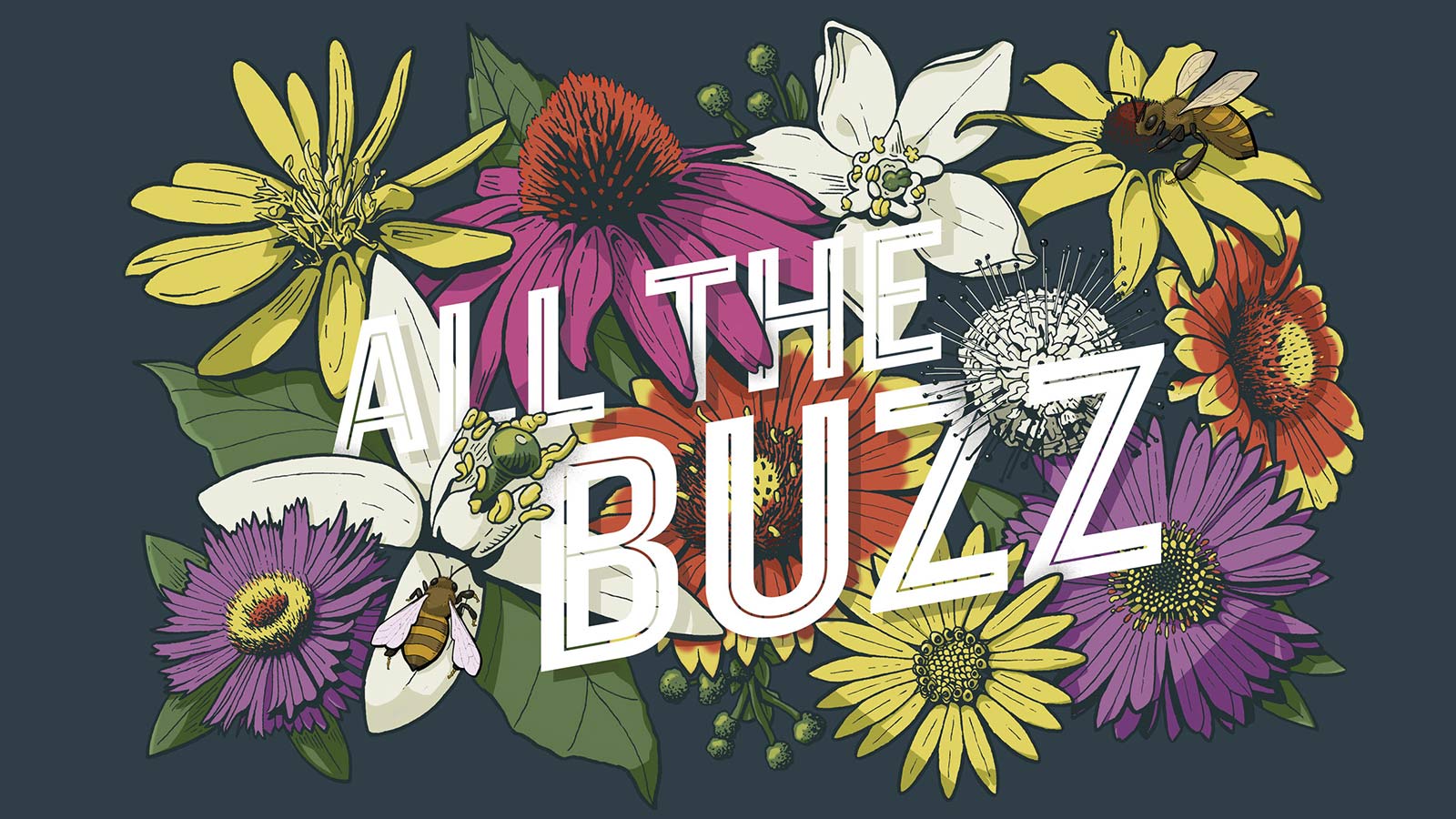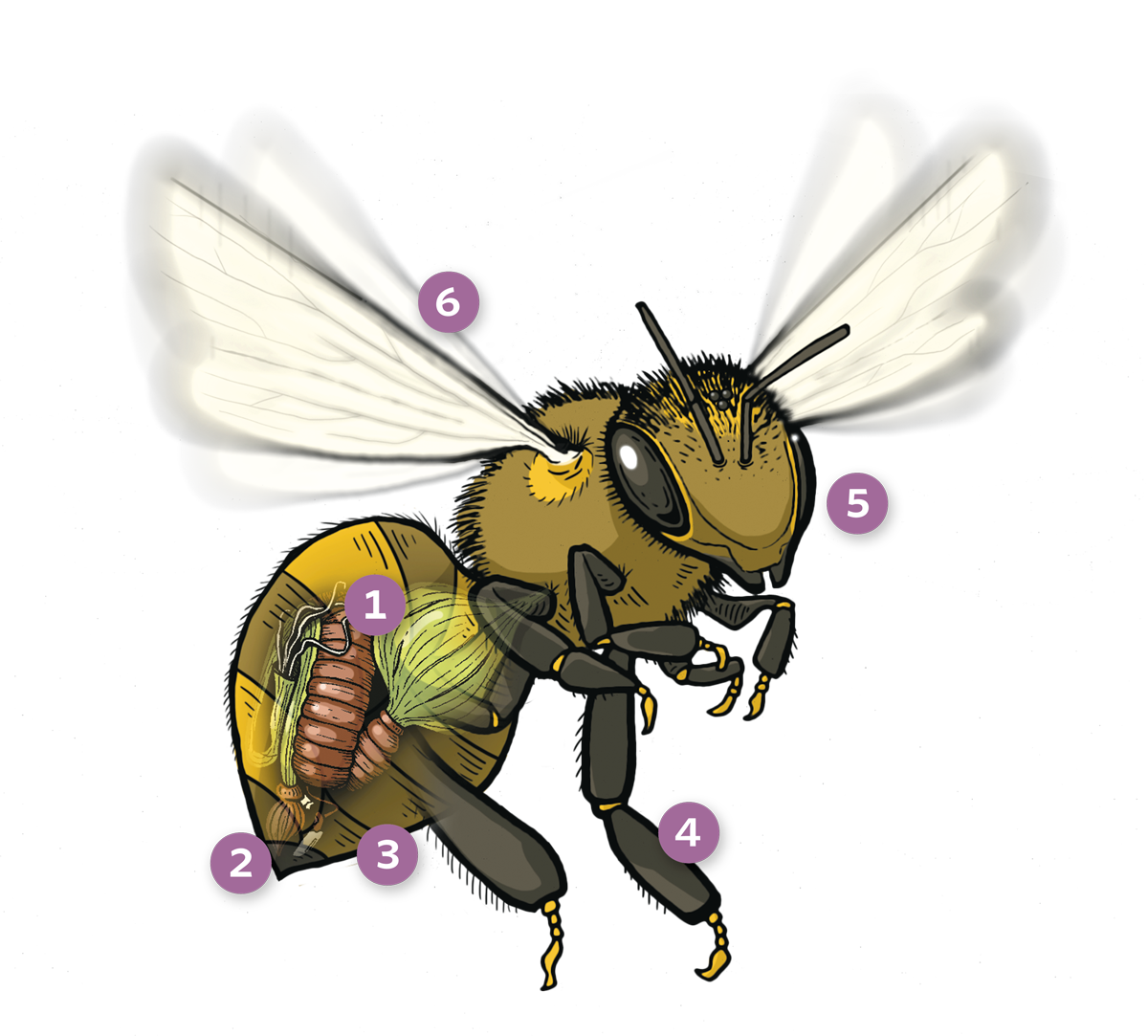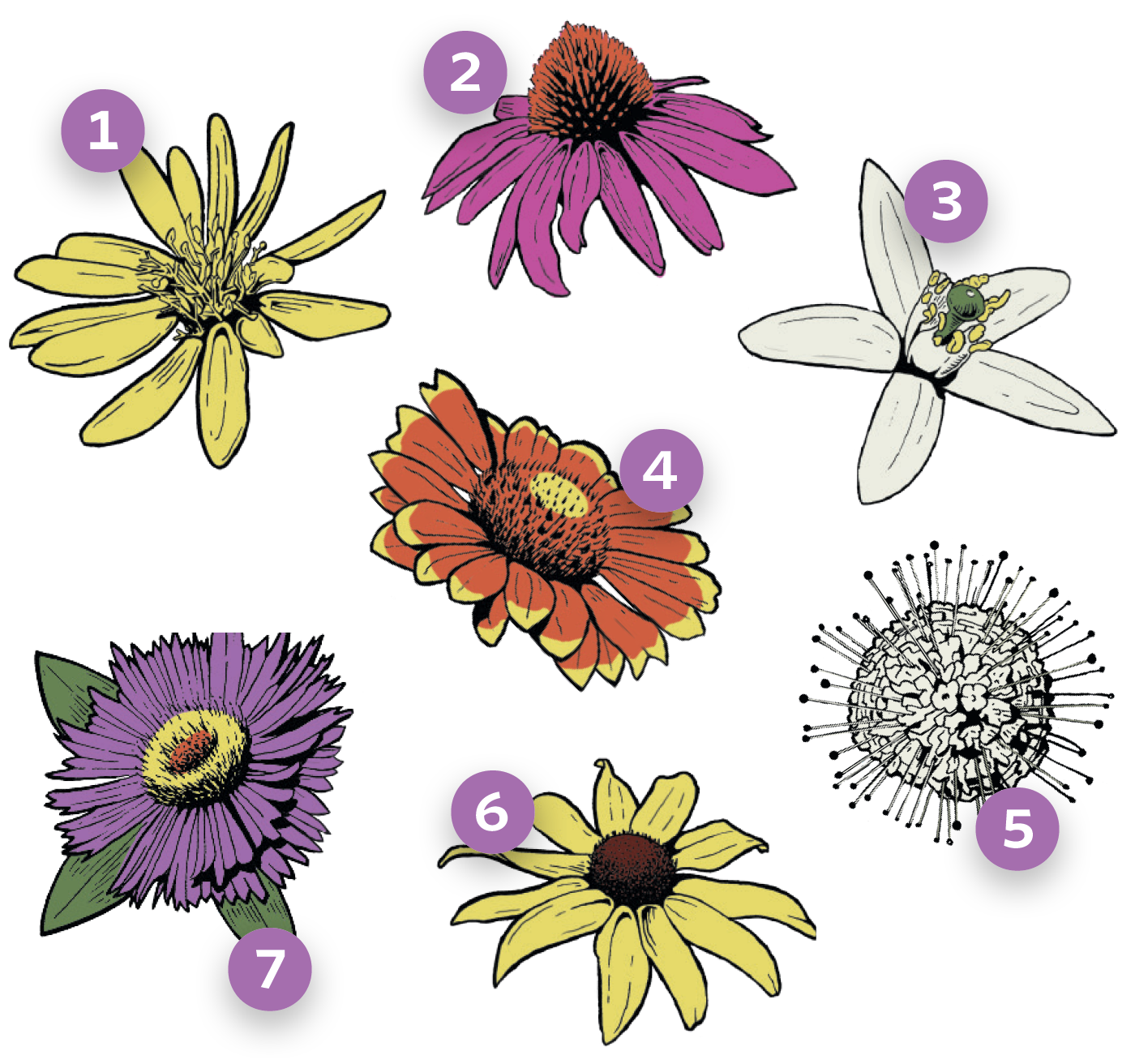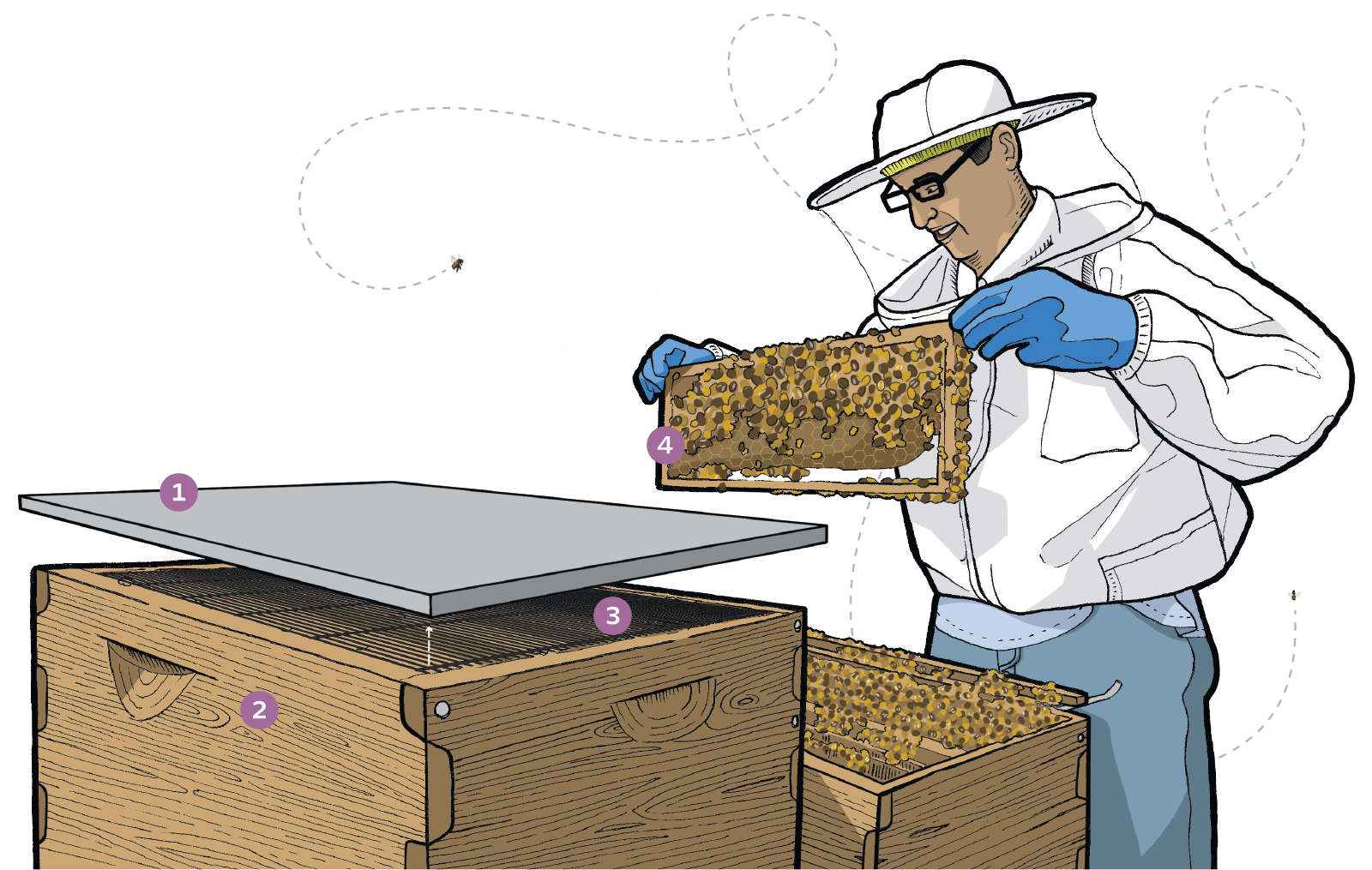
All the Buzz
Fall 2017 | By Nicole Dudenhoefer
In late 2006, U.S. beekeepers began noticing a collapse of honeybee colonies. Large numbers of worker bees were leaving the hives with plenty of food but not enough bodies to care for the queen and young bees. Experts attributed the loss to a number of causes, including parasites and pesticides used in farming. This phenomenon, known as Colony Collapse Disorder, sparked worldwide concern for these insects that play a vital role in crop pollination.
To combat the issue, UCF is working to attract and support pollinators, including honeybees, native bees, wasps and butterflies. Students and faculty recently planted two pollinator gardens on campus and placed three honeybee hives in the UCF Arboretum. Led by arboretum director Patrick Bohlen, UCF is also working on becoming an official Bee Campus USA, which recognizes universities that raise awareness and create sustainable habitats for pollinators.
The workings of the honey bee.

1. Stomachs
Bees have two stomachs. One digests food. The other stomach stores nectar until worker bees return to the hive, where they can feed it to other bees or put it in honeycomb cells for honey production.
2. Stinger
Worker bees die after stinging mammals with thick flesh, such as humans, because their barbed stingers lodge in the victim, along with their digestive material, muscles and a venom sac.
3. Abdomen
Four pairs of glands on the underside of young worker bees’ abdomens secrete beeswax. It is later used to construct honeycomb.
4. Legs
Honeybees have six legs arranged in three pairs. The rear pair have stiff hairs that hold pollen as they fly.
5. Eyes
With their five eyes, bees can detect ultraviolet light, leading them to nectar.
6. Wings
Honeybees have four wings that beat about 230 times a second, allowing them to fly an average of 15 mph.
Local flowers that attract pollinators.

1. Golden aster Chrysopsis
2. Purple Coneflower Echinacea purpurea
3. Orange Blossom Citrus sinensis
4. Black-eyed Susan Rudbeckia hirta
5. Indian Blanket Gaillardia pulchella
6. Tupelo Tree Flower Nyssa
7. Aster Symphyotrichum
Pollination Activity

Over the summer, senior biology student Yvelande Raymond studied pollinators’ flower visitation rates on campus in landscape beds; pollinator gardens, which have plants and flowers specifically selected to attract bees; and edge habitats, which are where two different environments — such as woods and a field — intersect. Here are some of her findings:
Pollinators on Campus

*For the safety of our campus community, hives should not be approached without authorization.
“Having honeybee hives on campus provides a hands-on educational opportunity for students to learn about social insects.”Patrick Bohlen
Honey in Context
2 million
Flowers that must be tapped by about 556 worker bees to make one pound of honey.
11,880
Pounds of honey produced in Florida, the no. 4 state for producing honey in 2016, following North Dakota, South Dakota and Montana.
44
Pounds of honey collected from UCF’s hives after three months.
33.3
Percent of all food and beverages consumed in the U.S. that are dependent on pollination.
1/12
Of a teaspoon is the amount of honey a single honeybee will produce in a lifetime.
The workings of the honey bee hive.
1. Roof
Protects the hive from water and insulates from heat and cold.
2. Hive body and honey supers
The hive body houses the queen, female worker bees and male drones. The honey supers, which rest on top of the hive body, store honey.
3. Queen excluder
Prevents queen from going into the supers while allowing the workers to pass through.
4. Frame
Provides a foundation for bees to build an evenly spaced comb.

